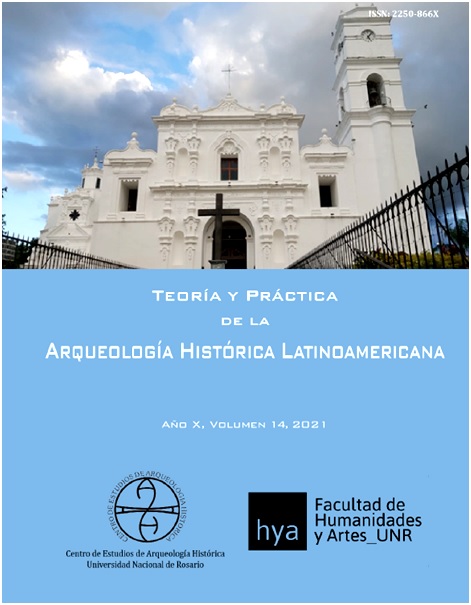EL SENDERO LOMADAS DE LA AGUADA Y SU USO MILENARIO EN LA QUEBRADA DE EL TALA, VALLE CENTRAL DE CATAMARCA
DOI:
https://doi.org/10.35305/tpahl.v14i1.145Palabras clave:
Sendero, transformación, Quebrada de El Tala, espacio, HistoriaResumen
Entendemos al espacio que vincula el Sendero de Las Lomadas de La Aguada en la Quebrada de El Tala desde la geografía crítica como una expresión material de un paisaje construido a lo largo del tiempo con usos que dan cuenta de la larga historia de resignificación de este paisaje y de su importancia en la memoria de las generaciones que lo han transitado, donde un conjunto de formas producidas por acciones sociales generaron transformaciones tanto de los sujetos como del entorno. Por ello, en este artículo daremos cuenta de las diversas formas de usos que tuvo y tiene el paisaje de la Quebrada de El Tala, tomando el sendero de las Lomadas de la Aguada como un espacio que dio lugar a formas específicas de organización del espacio y el tiempo en el valle de Catamarca. Este sendero fue una vía de acceso obligada entre las ocupaciones humanas conectando el valle de Catamarca, la Quebrada de El Tala y las márgenes superiores del Cordón montañoso del Ambato durante casi dos milenios, se lo asocia a numerosos sitios prehispánicos del Periodo Formativo hasta la conquista. Los españoles lo transitaron desde 1595, como vía de acceso a la sierra de Ambato. A fines del siglo XIX se lo mejora para provisionarse de materiales para construcción en la ciudad, hacia mediados del siglo XX cae en desuso como vía de comunicación y, finalmente, su reutilización en el siglo XXI cobró nuevamente importancia como espacios vividos, espacios creados, espacios transitados y sobre todo espacios culturales donde su significación en su valor histórico y cultural cobra importancia.
Descargas
Descargas
Publicado
Cómo citar
Número
Sección
Licencia
Derechos de autor 2022 Teoría y Práctica de la Arqueología Histórica Latinoamericana

Esta obra está bajo una licencia internacional Creative Commons Atribución-NoComercial-CompartirIgual 4.0.







